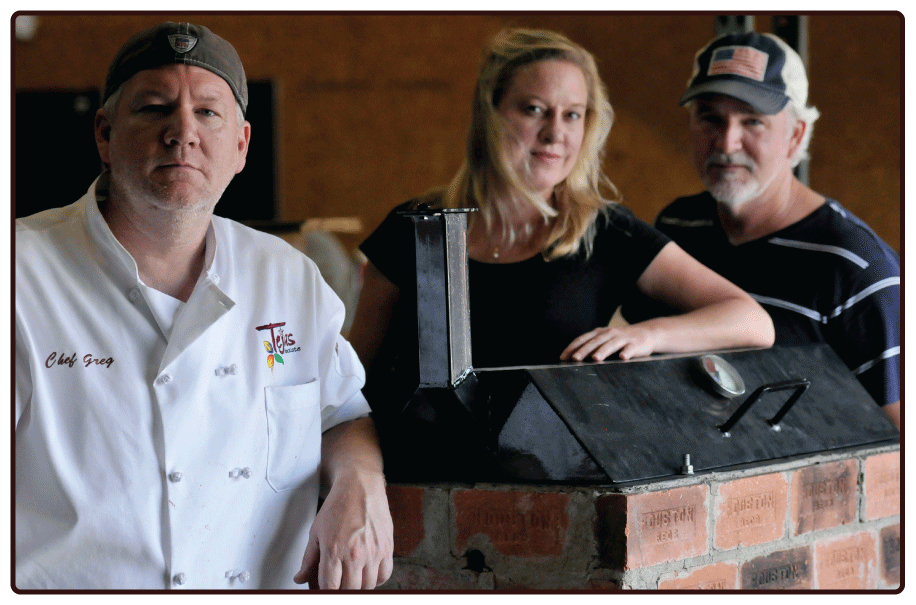 Thank you to Scott Moore of Tejas Chocolate in Texas for sharing his tempering discovery. Anyone who works with chocolate can appreciate what a challenge tempering can be. Here is Scott's story in his own words:
Thank you to Scott Moore of Tejas Chocolate in Texas for sharing his tempering discovery. Anyone who works with chocolate can appreciate what a challenge tempering can be. Here is Scott's story in his own words:
There is value in just getting by in the beginning.
Chocolate making for me began as curious hobby after discovering great chocolate for literally the first time. I was surprised that craft chocolate could be so good, and it motivated me to find more. When I searched for more craft chocolate, I learned that several brilliant American chocolate makers started their business in their home kitchens.
Two more discoveries stoked the chocolate making flames inside me: Nobody was doing bean to bar chocolate in Texas, and I could roast cocoa beans on my barbecue pit. For a pretty modest investment I could either buy or build the tools I needed to get started. I’d say I got to making chocolate for less than a $1,000. While I felt confident enough about roasting, winnowing, and grinding, the chocolate making step that had me most concerned when I first started was tempering. I could not justify the expense of a tempering machine at the time, and I was reading a lot about how to table temper chocolate. The temperature of melted chocolate is raised, lowered, raised again in order to have stable, snappy, and glossy chocolate. While tempering chocolate you are trying to arrive at final (working) temperature that is very specific. For most of our chocolate that window is 89-92 degrees. Landing under that range leaves to many unstable crystals in play, and over that temperature range the stable crystals you have made began to melt. Knowing that if I missed the mark all I had to do was start over was at least comforting.
Having to start all over; however, began to annoy me to no end. I couldn’t get it right in the beginning. It felt like going out for dinner, getting halfway to the restaurant, and having to turn around because I left my wallet at home. I don’t like going backwards.
I had two candy thermometers. When trying to hit my temperature range of 89-92, one thermometer read 94 and the other 87. My chocolate had more fat bloom than Jaba The Hut and crumbled like an old cookie. But I tool comfort in blaming the tools I was using. A rare time when the operator was not at fault. I would soon own a very accurate lazor thermometer. One of the better investments I have ever made.
In August of 2010, I was trying once again to temper chocolate in the kitchen. In Texas, we have only three seasons. Summer, January, and August. Tempering chocolate when its 104 outside when the kitchen might get down to 84 is just loads of fun. Spreading chocolate that is 115 degrees so I could lower the temperature to 85 and make some stable crystals was taking forever. Much longer than other people claiming it took them to temper chocolate. It finally dawned on me to check the temperature of the marble slab. It was at 84 degrees.
I’m a slow learner.
That August, I literally iced down the slab for more than an hour before trying to temper chocolate again and it worked. Now I was able to pull down the temerature of melted chocolate fairly quickly and build the poly morphs I needed to seed the rest of the chocolate.
After successfully tempering countless batches of chocolate over the next 18 months or so, I learned to temper chocolate without a thermometer. It’s like anything you do. You just keep getting better at it. These days, we use a continuous tempering machine. More orders required more efficiency so we bucked up and bought a nice FBM continuous tempering machine.
Starting a new chocolate business is like lots of other new small businesses. It is always a challenging thing to balance what happens first…orders, or the ability to fulfill them. You almost need to do those things to happen simultaneously unless you have access to sufficient money which we did not. We always believed “they would come if we built it”, but we needed them to have already been here in order to build it.
Hand tempering was part of that equation for us. We just couldn’t afford a production-type tempering machine until we generated some revenue. We couldn’t generate revenue until we could sell properly tempered chocolate. So we hand tempered chocolate and hand filled molds to the wee hours on many occasion.
I still table-temper chocolate from time to time for special events, and for the simple satisfaction of doing something by hand. I was forced to learn this skill and I’m grateful for that experience.
Cheers!Scott

